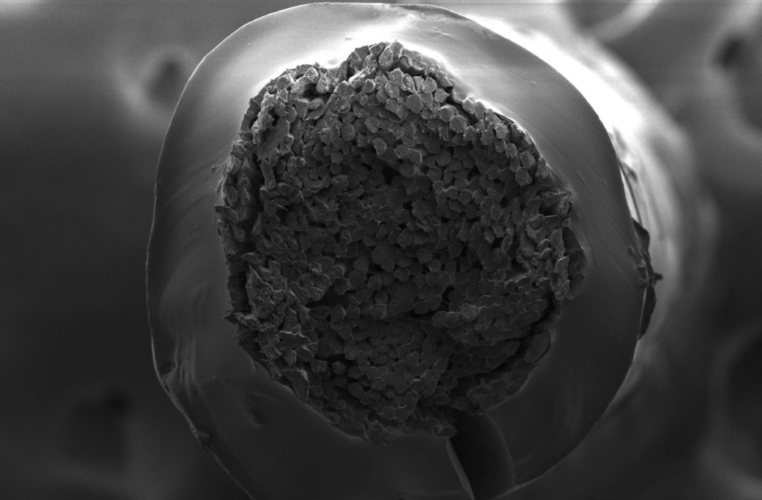
The stiff fibres of current sutures can cause damage to soft tissues so a team at McGill University in Canada have developed a gel sheathed (TGS) alternative that contains a tough, slippery gel envelop that imitates the structure of soft connective tissues.
Biocompatible CaproGlu bonds wet wounds in seconds
Interview: Pathfinder Medical CEO, Sorin Popa
In putting the TGS sutures to the test, the researchers found that the nearly frictionless gel surface mitigated the discomfort and post-surgery complications typically caused by traditional sutures. Part of the problem lies in the mismatch between human soft tissues and the rigid sutures that rub against contacting tissue, said researchers from McGill and the INRS Énergie Matériaux Télécommunications Research Centre.
To tackle the problem, the team developed a new technology that mimics the mechanics of tendons. “Our design is inspired by the human body, the endotenon sheath, which is both tough and strong due to its double-network structure. It binds collagen fibres together while its elastin network strengthens it,” said lead author Zhenwei Ma, a PhD student under the supervision of Assistant Professor Jianyu Li at McGill University.
The endotenon sheath forms a slippery surface to reduce friction with surrounding tissues in joints and also delivers necessary materials for tissue repair in a tendon injury. In the same way, TGS sutures can be engineered to provide personalised medicine based on a patient’s needs, the researchers said in a statement.
“This technology provides a versatile tool for advanced wound management. We believe it could be used to deliver drugs, prevent infections, or even monitor wounds with near-infrared imaging,” said Li. “The ability to monitor wounds locally and adjust the treatment strategy for better healing is an exciting direction to explore.”
The team’s findings have been published in Science Advances.




Swiss geoengineering start-up targets methane removal
No mention whatsoever about the effect of increased methane levels/iron chloride in the ocean on the pH and chemical properties of the ocean - are we...